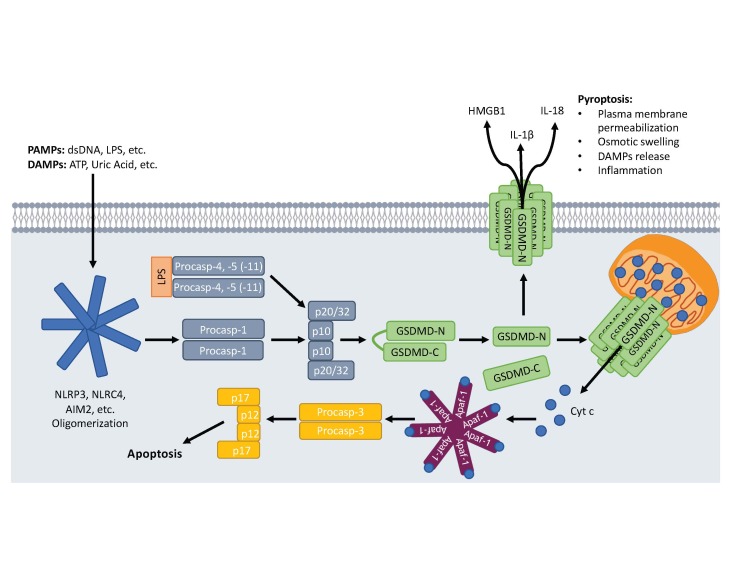Figure 3.
GSDMD-mediated pyroptosis. Macrophages and dendritic cells sensing DAMPs and PAMPs will activate canonical inflammasome assemblies leading to the recruitment and activation of procaspase-1 (procasp-1). Intracellular LPS from gram-negative bacteria binds to and activates procaspases -4 or -5 (-11 in mice; procasp-4, -5, -11) forming the noncanonical inflammasome. Active inflammatory caspases cleave GSDMD liberating an ~30 kDa N-terminal fragment (GSDMD-N) that translocates and oligomerizes to form pores in the plasma membrane. These pores allow the release of proinflammatory molecules like HMGB1, IL-1β, and IL-18 and disrupt ionic gradients leading to cellular swelling and pyroptosis. GSDMD-N also permeabilizes the mitochondria, releasing proapoptotic factors like Cyt c leading to activation of caspase-3 via the Apaf-1 apoptosome.

